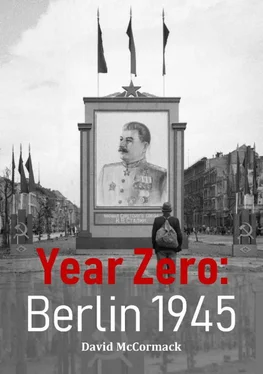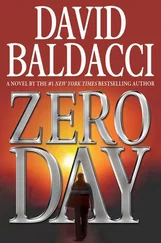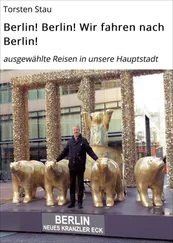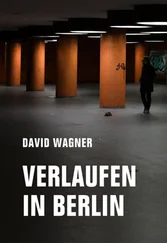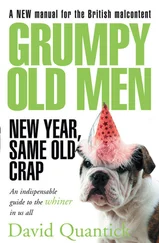The comments by the married Private accurately reflect the moral double-standards of the time. This eighteen year old girl was good enough for sex, but quite unsuitable for marriage. Some Germans lamented the apparent collapse in traditional moral standards. In Hitler’s Germany, a woman’s place was determined by the so-called three K’s (Kinder, Kuche and Kirche), which translated to children, home and church. One German police official stated:
It is impossible to distinguish between good girls and bad girls in Germany. Even nice girls of good families, good education and fine background have discovered their bodies afford the only real living. Moral standards have crashed to a new low level. At the present rate, in two months time I wonder if there will be a decent moral woman left.
The police officials comments display a staggering lack of understanding for the reasons why so many women prostituted themselves. Terms such as ‘good’, ‘bad’ and ‘nice’ ceased to mean anything as so many women from all strata of society could be bought cheaply. In this new world, an impoverished Baroness might struggle to find work as a waitress in a seedy club. Traditional social roles became blurred as nearly all women faced the same struggle for survival.
Wives longed for their husbands to return. However, when their menfolk finally returned from captivity, they could not comprehend what their partners had endured. They had no inkling of the initial explosion of sexual violence. Nor could they understand the desperate shortages of everyday necessities which had forced their loved ones into finding protection and sustenance in the arms of a Soviet officer or soldier. How could they have demeaned themselves in this way? Therefore, for many, there was no joyful reunion, but blame, accusation, recrimination, and ultimately, separation. When we think of the end of the war in Europe, we tend to picture the joyous scenes in Trafalgar Square or the ecstatic crowds thronging Times Square in New York. Such scenes befitted the hard fought for victory won by the Allies. In Berlin, the very different scenes witnessed by chroniclers of events characterised the trauma and degradation of defeat.
Chapter Thirteen
Renaissance
In Berlin, the extent of the devastation was almost too much to comprehend. Several months after the end of hostilities, some basic services had been restored, but life remained a daily struggle. Brett-Smith was both amazed and impressed by how people managed to live in the midst of such widespread devastation. He wrote:
Houses that were nothing but empty shells or gutted skeletons emitted cave-dwellers from their basements, and how often did you not see and notice with surprise that one room in a whole block of flats was still occupied, the rest being ruins, and the survivor betrayed only by the glow of an electric bulb or by the dismal line of washing hanging outside! Indeed some dwellings were so invisible to the eye, their entrances down slopes or steps concealed by weeds, bushes, or stones, that you felt you had been pitchforked back many centuries into the company of Neanderthal man. Fully to realise the devastation you had to leave Berlin for a few weeks, and then, on returning, you saw it with new eyes. Living among so much ruin you tended to become oblivious to it all. Yet you could walk for miles in the middle of the city, starting, say, from the Brandenburger Tor or from the Belle Alliance-Platz, and see nothing but destruction, with the sour smell of death and corruption rising from the Spree, which was hardly more than an open sewer. But among it all life was going on, shops were springing up (though heavens knew where they found anything to sell) and blades of grass poked up through the rubble.
However, it was from above that the devastation of Berlin could best be appreciated. Brett-Smith went on to describe his own impressions of the ruined city from the air:
…As your plane climbed sharply away, or came in to land over the streets of Berlin, it seemed to you as you looked down as if some fantastic collection of empty match-boxes and hollow bricks from a child’s nursery had been shuffled together and strewn about, densely but untidily, for many of them were upended or bent. From a little farther away this gallimaufry took on an apparent symmetry, so that an arriving visitor at first would be deceived by the regularity of the cratered landscape below him, and would not realise that the orderliness was only an orderliness of destruction, of absence of roofs and walls and outstanding landmarks. Many church spires and various towers still survived, it is true, whether above their own shattered foundations or, less frequently, on the summits of whole buildings, but much of the usual give and take, as it were, of a city’s outline had disappeared.
Such was the devastation in Berlin, that there appeared no future for the city, only the present, dominated as it was by the ruins which began to take on a permanent appearance. Yet, in this city of smashed monuments and ruined buildings, life in the form of culture, religion and politics emerged from the cellars.
The desperate need to escape the drudgery of daily life in Berlin led to an artistic revival in the city. Under National Socialism, music had been the subject of strict regulation. Scores by Jewish composers were prohibited. New musical trends were also frowned upon, particularly ‘degenerate’ jazz which was seen as a damaging foreign import. Now, following the collapse of Hitler’s Wagnerian fantasy, music of all types flourished. There was a great revival in classical music, in which the previously proscribed works of Mendelssohn were greeted with enthusiasm bordering on ecstasy. In the Theatre des Westens in Charlottenburg, the Berlin Philharmonic Orchestra conducted by Professor Robert Hager and Sergiu Celibidache played to entranced audiences, eager to be a part of the classical revival. Leo Borchard, the orchestra’s senior conductor had been shot dead by an American sentry in one of those stupid and silly incidents which were a less than rare occurrence in those early days of the occupation. Borchard had been travelling as a passenger in a British vehicle, whose driver failed to respond to the American sentry’s challenge.
Jazz music also flourished. During the era of cultural prohibition, it had been the outlet for the frustrations of dissident groups such as the ‘Swing Kids’. Now, it proliferated in the numerous establishments that had sprung up between Adolf-Hitler-Platz (later renamed as Theodor-Heuss-Platz) and the Kaiser Wilhelm Memorial Church at the end of the Kurfurstendamm. Not everyone embraced jazz as there were those who were still influenced by Goebbels’ propaganda. For the most part, it was the younger generation who saw jazz as a vehicle for releasing desires and emotions which had been suppressed by the social mores of the National Socialist state. For these people, jazz represented freedom, individuality and modernism.
In the summer of 1945, jazz musician Coco Schumann returned to his native Berlin. Schumann had been an active member of the underground jazz scene. In 1943, he was denounced as being half-Jewish and subsequently deported to the holding camp at Theresienstadt and then on to Auschwitz. Here, he came face-to-face with the infamous Dr Josef Mengele. He was saved from the gas chambers by a chance encounter with a guard, who, being a one-time jazz fan recognised Schumann from his many appearances on the underground music scene. The guard placed Schumann in a Roma musical group. Whilst a member of the group, he played tunes such a ‘La Poloma’ for the guards who were supervising the murder of hundreds of thousands of people during the last six months of 1944. Schumann later stated that, ‘For a long time, I suppressed what I saw – the eyes of children who were led to the gas chamber, the bodies being offloaded’. Delirious with spotted fever, Schumann almost succumbed just as the liberators were arriving. Yet, he survived and returned to war ravaged Berlin where he met his future wife whilst walking along the Kurfurstendamm. After spending several years in Australia, Schumann and his wife returned to Berlin. He quickly re-established himself on the Berlin jazz scene and in time became Germany’s most renowned swing guitarist.
Читать дальше
